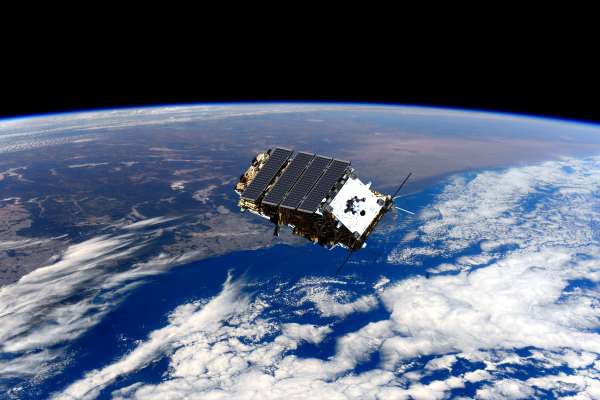Published on the 03/10/2018 | Written by Jonathan Cotton

Harnessing industry, research and the issuing of a ‘lunar challenge’…
CSIRO has said in no uncertain terms: The challenge is to grow the size of our domestic space industry to AU$12 billion by 2030. That’s a nice round number, but even more interesting is the way CSIRO is proposing we get there: Developing deep space life support systems? Check. Space mining? Double check. Autonomous robotic exploration? Oh my.
Launched last week, CSIRO’s Space Roadmap takes a good hard look at Australia’s unique strengths and geographic advantages and how they can be used to increase – significantly – the size of Australia’s share of the international space sector.
“The Coalition Government has established the Australian Space Agency to grow our space sector, helping to create more Australian jobs and boost our economy.”
So what conclusions are drawn?
The money lies in three key areas, says the report: Space-derived services, space object tracking, space exploration and utilisation.
It’s that last one, space exploration, that’s got people talking: A ‘Lunar Orbital Platform Gateway’ – that’s right, a base on the moon – is among one of the (highly speculative) proposals, providing a staging post for lunar surface shuttles and a stopping point for human missions to Mars.
And that may not be as far fetched as it seems. CSIRO partner, the Australian Space Agency, is reportedly already in discussions with the US on NASA’s plan for an orbital lunar space station. (Actual building of the platform is due to start in the 2020s).
“Our space roadmap charts a course for economic growth using space, and champions a new era of space exploration to inspire our children with the power of science to make the ‘impossible’ possible,” says Larry Marshall, CSIRO chief executive.
“Our existing space industry is built on a foundation of trust earned 50 years ago when we enabled the world to see mankind touch the Moon.
“That kind of inspiration is a key ingredient in supercharging growth in new industries, new jobs, new science, technology, engineering and maths (STEM) talent and developing a dynamic nation where the sky is no longer the limit.”
[CONTINUED BELOW]
And while there’s plenty of excitement around proposals to turn science fiction into science fact, it’s not all about men on the moon. The report also identifies key opportunities to grow Australia’s space industry using more down-to-earth methods, focusing particularly on downstream industry and developing new services, businesses and industries based on space-enabled data and services. Add to that the leveraging of Australia’s research and industrial strengths – which could itself generate up to 20,000 new jobs and help to prepare the next generation of STEM professionals and entrepreneurs for Australian space ventures – and you’ve got a very ambitious roadmap leading to some very exciting possibilities.
And things are happening quickly. Last month the Australian Space Agency signed a statement of strategic intent with European manufacturing giant Airbus Defence and Space SAS. That agreement sees Wyndham airfield in Western Australia proposed as the first flight base for Airbus’s Zephyr solar-powered unmanned aircraft project. (Zephyrs can be used for precision farming guidance, environmental and security monitoring, and to provide internet coverage to regions of poor or zero connectivity – as well as military applications).
“The Coalition Government has established the Australian Space Agency to grow our space sector, helping to create more Australian jobs and boost our economy,” says Minister for Industry, Science and Technology Karen Andrews.
“The statement is confirmation of Airbus’ support for Australia’s space discovery, technology development and connectivity, and science, technology, engineering and maths education”.
Similarly, last month the Agency and its French counterpart, the Centre National d’Etudes Spatiales, entered into a memorandum of understanding that will help both nations develop their space capabilities, particularly in the areas of space operations, space science, earth observation, positioning systems and communications.
The first steps have already been taken, with CNES partnering with UNSW Canberra Space for the development of the Australian National Concurrent Design Facility to develop ‘world class space missions’, and for research towards the development of satellite tech with advanced sensors and on-board processing and intelligence.
“Civil space engagement initiatives like this with the French Space Agency will explore advanced space technology and applications used in earth observation and remote sensing with high-altitude balloons and satellites, space operations and joint missions,” says Clark.
Download CSIRO’s Space Roadmap here.



























